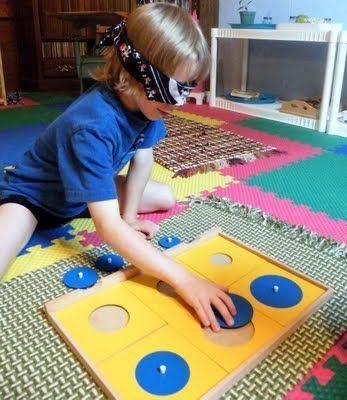Right To Learn
Montessori Geometric Cabinet
Montessori Geometric Cabinet
Couldn't load pickup availability
Geometric Cabinet
Materials
A wooden cabinet with 6 drawers .Each drawer and the tray contain 6 wooden divisions. In most of the divisions, there is a wooden inset with a knob to lift it out. The inset and the bottom of the drawer are painted the same color blue. The square frames of the insets are a contrasting wood color and are removable. In the presentation tray as, in some drawers where there are not 6 insets, the remaining square divisions are whole.
Drawer 1
Contains 6 circles increasing in diameter from 5cm to 10cm.
Drawer 2
Contains 1 square and 5 rectangles, the bases vary from 10cm to 5cm, while the height remains the same.
Drawer 3
Contains 6 triangles: equilateral, acute-angled isosceles, right-angled isosceles, obtuse-angled isosceles, right-angled scalene, obtuse-angled scalene.
Drawer 4
Contains 6 regular polygons: pentagon, hexagon, heptagon, octagon, nonagon, and decagon.
Drawer 5
Contains 4 quadrilaterals: rhombus, parallelogram, right-angled trapezoid, isosceles trapezoid, and 1 triangle – acute-angled scalene.
Drawer 6
Contains curved figures: curvilinear triangle, ellipse, oval, and quatrefoil.
Introduction
Invite the child by telling him you have something to show him. Bring him over to the correct shelves and point to the Geometric Cabinet. Show the child the demonstration tray and name it. Have the child take the demonstration tray off of the shelf and place it in the middle of the table.
Constructing
- Using your right thumb and index finger, pinch the knob of the circle and lift the circle out slowly of its inset.
- Gently place the circle in the middle of the empty wooden space above.
- Lift the square inset in the same manner and place it below in the empty wooden space.
- Lift the triangle in the same manner and place it above in the empty wooden space.
- Lift the circle by the knob as before but this time with your left fingers.
- Rotate the circle slightly to the vertical position.
- Place two of your right fingers on the edge of the circle nearest you and trace the edge of the circle all the way around.
- Remove your right fingers and then repeat the tracing of the edge.
- Place the circle on the empty wooden space.
- Trace the inset edge of the circle in the same manner as above and using your two right fingers.
- Repeat the tracing of the inset.
- Gently replace the circle into its inset.
- Repeat in the same manner for the square and then for the triangle.
Offer the child to do the lesson.
Show the child how to change out the insets with other shapes from the Geometric Cabinet.
Exercises
Exrcice 1
The child works individually with the material as shown in the presentation. The child can also repeat the lesson using 3 other figures, repeating and changing as often as he likes.
Exercice 2
The child works with two drawers at a time. (This can be done on a mat by placing the shapes directly onto the mat to be traced. He then traces a shape and its inset before replacing the shape back.) He then moves up to working with three drawers at a time. He can continue adding drawers until he is working with all six drawers. (Once the drawers no longer fit onto mats, have the child take the insets out of the drawers to create more space. Then place the drawers to the side, or back into the cabinet until needed to put the insets away.)
Language
Quadrilaterals rectangle, square, rhombus, parallelogram, trapezoid, right-angled trapezoid
Curved Figures circle, oval, ellipse, quatrefoil, curvilinear triangle.
Triangles equilateral, right-angled isosceles, acute-angled isosceles, obtuse-angled isosceles, right-angled scalene, acute angled scalene, obtuse-angled scalene.
Polygons pentagon, hexagon, heptagon, octagon, nonagon, decagon.
Purpose
Direct
Discrimination of form, to provide the child with the key to orient himself in the world of shapes.
Indirect
Preparation for mathematics: geometry.
Preparation of the hand for writing.
Control of Error
There is a build in control of error in the material.
Age
3 to 4 1/2 years
Share





